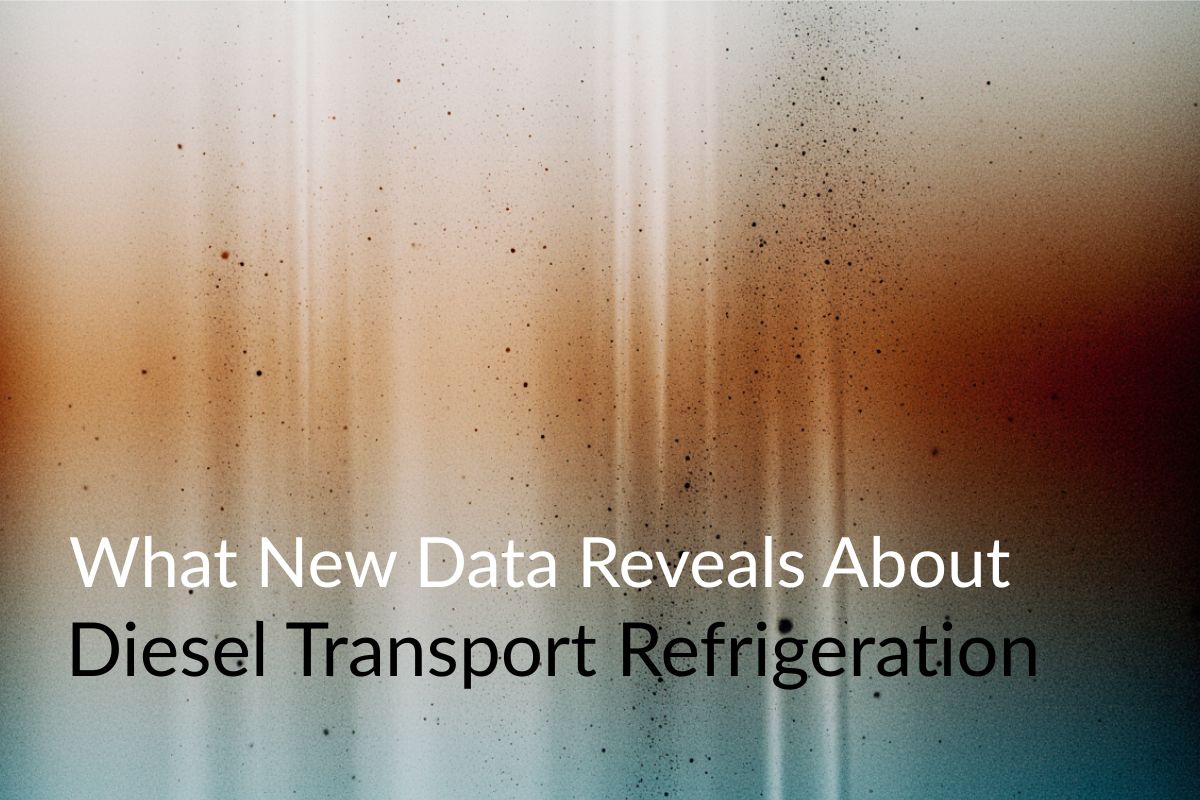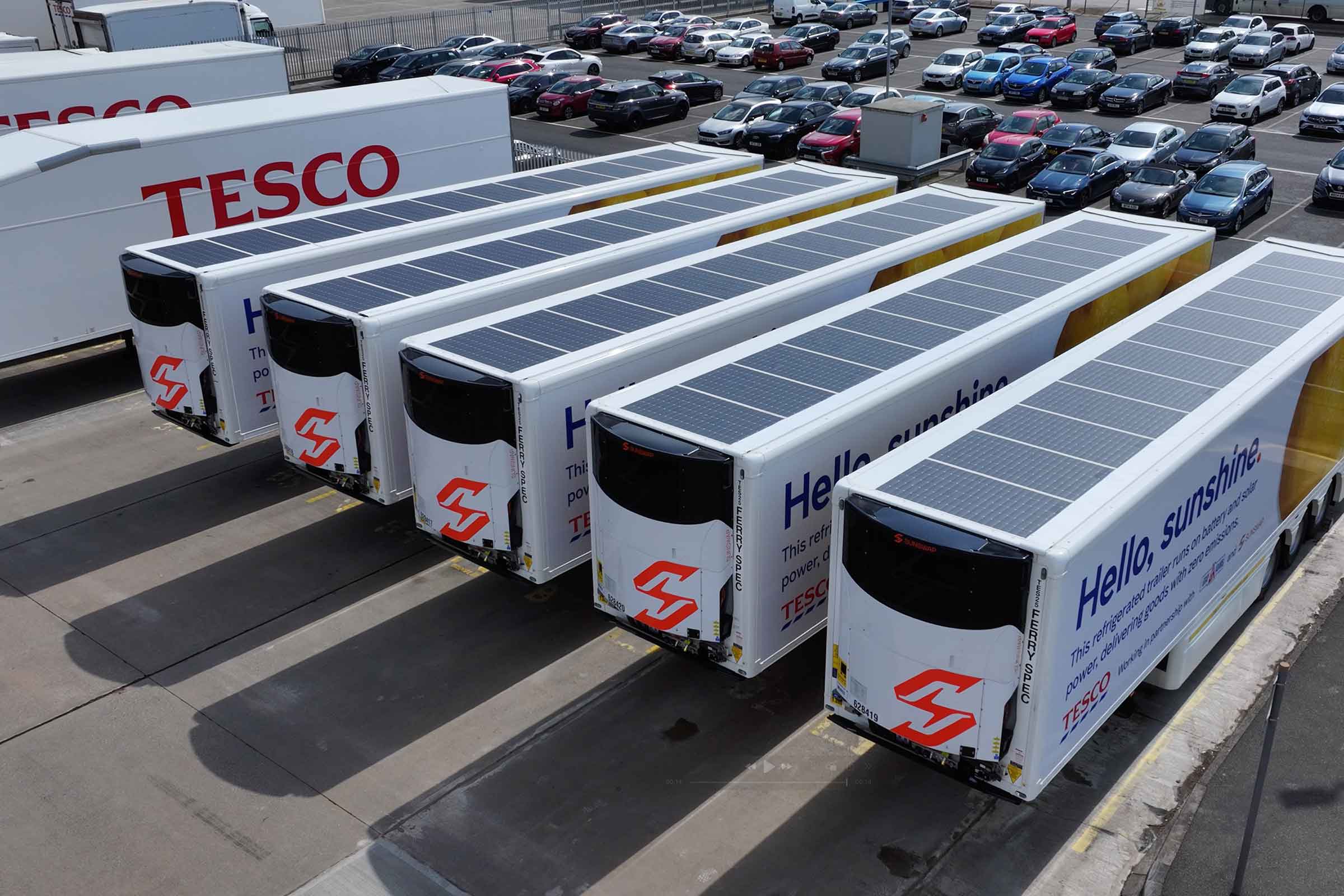What New Data Reveals About Diesel Transport Refrigeration

Bottom line: A government-funded study has quantified, for the first time, the real-world emissions impact of diesel-powered transport refrigeration units. For fleet operators, this data provides clarity for long-term planning - and explains why some are already making the transition to electric.
Understanding what we're actually running
Over the past decade, the industry has done exactly what was asked. Euro VI regulations transformed HGV engines, and operators invested heavily to meet those standards. The investment worked - modern truck engines are dramatically cleaner than their predecessors.
But there was a piece of the puzzle that nobody had properly measured: the diesel engines powering refrigeration units.
Not because anyone was hiding anything. Simply because transport refrigeration units were doing the job they were designed for, and comprehensive real-world emissions data didn't exist.
That changed this year when a comprehensive study by Zemo Partnership, funded by the Department for Transport, has finally put numbers to how these units perform across different conditions.
You can read the report yourself here.
What the data actually says
The research tested six different diesel refrigeration systems across various conditions - chilled, frozen, multi-temperature, and at ambient temperatures from 5°C to 30°C. They combined this with a market survey to model UK-wide impacts.
Here's what the testing revealed:
The UK's estimated 40,000-55,000 diesel transport refrigeration units:
• Consume around 235 million litres of fuel annually
• But contribute an additional 20% nitrogen oxide (NOx) emissions to your fleet emissions
• Account for a huge 40% of fleet particulate emissions
The comparison with modern truck engines is stark. A single diesel refrigeration unit produces 2-5 times more particulate matter than the Euro VI engine pulling it, despite using only a fraction of the fuel.
The testing also revealed something operationally significant that could be interesting to operators, emissions spike dramatically in hot weather. At 30°C, particulate emissions nearly doubled compared to 5°C conditions. Summer multi-drop operations in urban areas create the highest impact scenario.
Why having this data matters
The benefit of the report is it means we have information that can help the industry make better decisions.
If you're tracking carbon emissions, you now have actual data for refrigeration units rather than estimates. That matters for reporting and for understanding where your real emissions are.
If you're planning fleet replacement, you can now model the full emissions picture, not just the tractor unit. That affects everything from customer tender responses to your own sustainability commitments.
If you're managing costs, you're already dealing with the red diesel phase-out. That policy change removed the 46p per litre fuel duty differential in 2022. In the UK those 235 million litres annually cost roughly £108 million more in annual fuel duty than it was three years ago.
Better data helps you understand where the costs actually are.
What this signals
Currently, there are no specific regulations targeting diesel transport refrigeration units. But this study provides the evidence base that typically comes before policy development.
The pattern is familiar: comprehensive testing, followed by consultation, followed by regulatory direction. The government now has quantified data on a previously unmeasured part of the sector.
That doesn't mean immediate restrictions. But it does mean operators making decisions about equipment replacement today should factor in a 7-10 year planning horizon - the typical life of a refrigeration unit.
The question isn't whether diesel units will stop working tomorrow. It's whether the equipment you buy in 2025 will still meet requirements in 2032.
Why electric solves this
The solution is the mounting cost and emissions of diesel engines is removing the diesel engine entirely.
Electric transport refrigeration eliminates:
• All tailpipe emissions
• The fuel duty burden and rising cost of diesel
• The maintenance overhead
• The regulatory risk
Electric removes the ‘diesel problem’ entirely.
At Sunswap, we've been working with operators making this transition. Actual experience shows:
• Range works for the vast majority of operations. Our purpose-built design delivers 24-hour runtime on frozen, with battery lifespan exceeding two months on chilled operations.
• Reliability exceeds diesel.
• Minimal maintenance. No oil, no filters, no diesel engine servicing. Just the refrigeration system itself.
• Total cost of ownership works when you factor in fuel savings, maintenance reduction, and operational flexibility.
The operators switching to electric now aren't doing it for sustainability optics. They're doing it because the operating savings stack up. Fuel savings alone often cover the difference. Add reduced maintenance and regulatory future-proofing, and the business case closes.
News and Updates
Stay up to date with the latest developments from Sunswap.


.webp)





